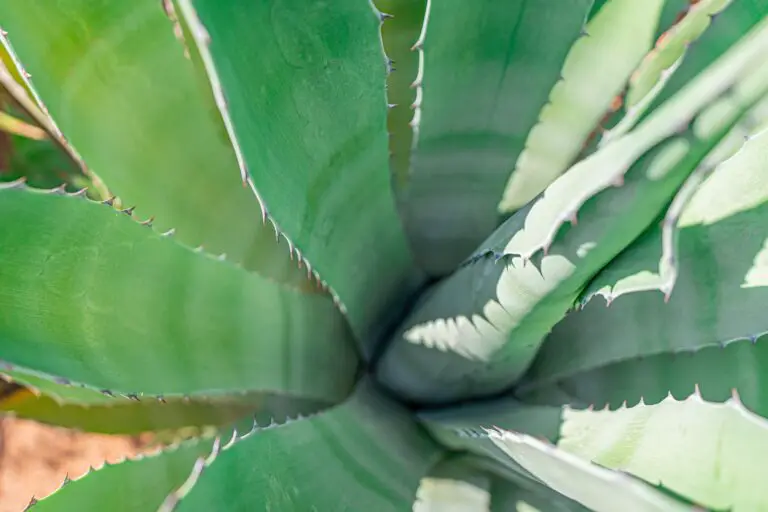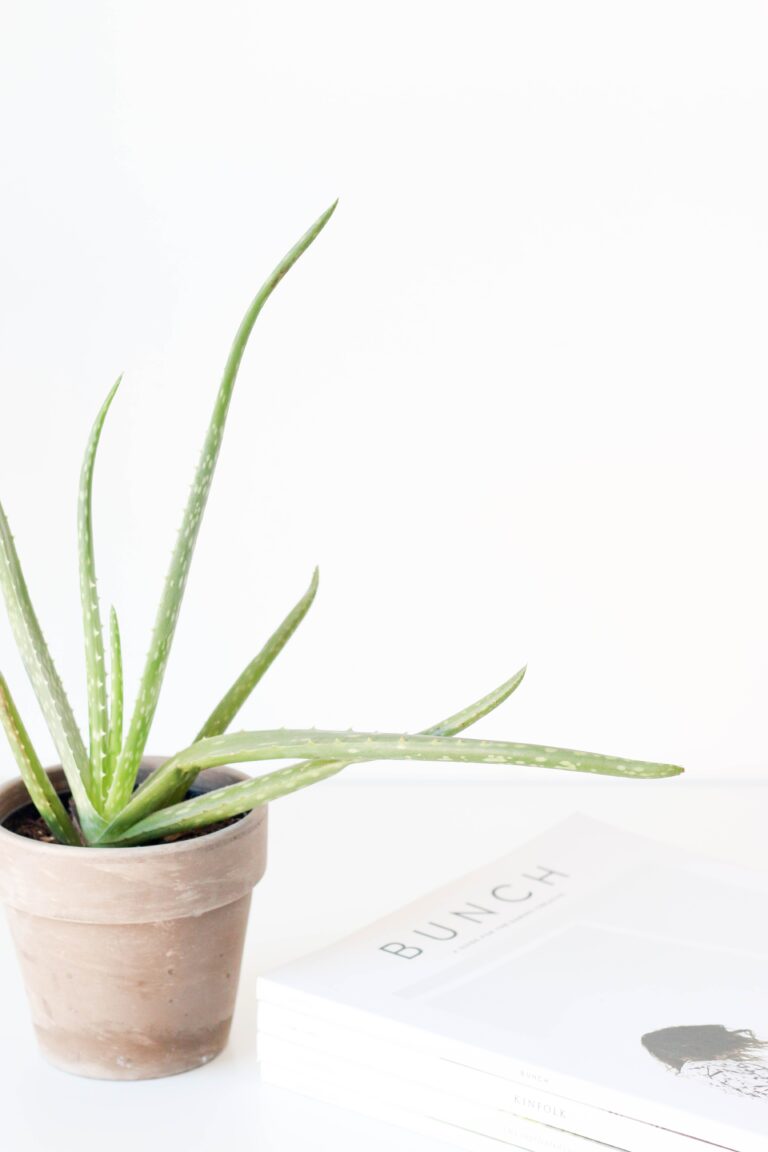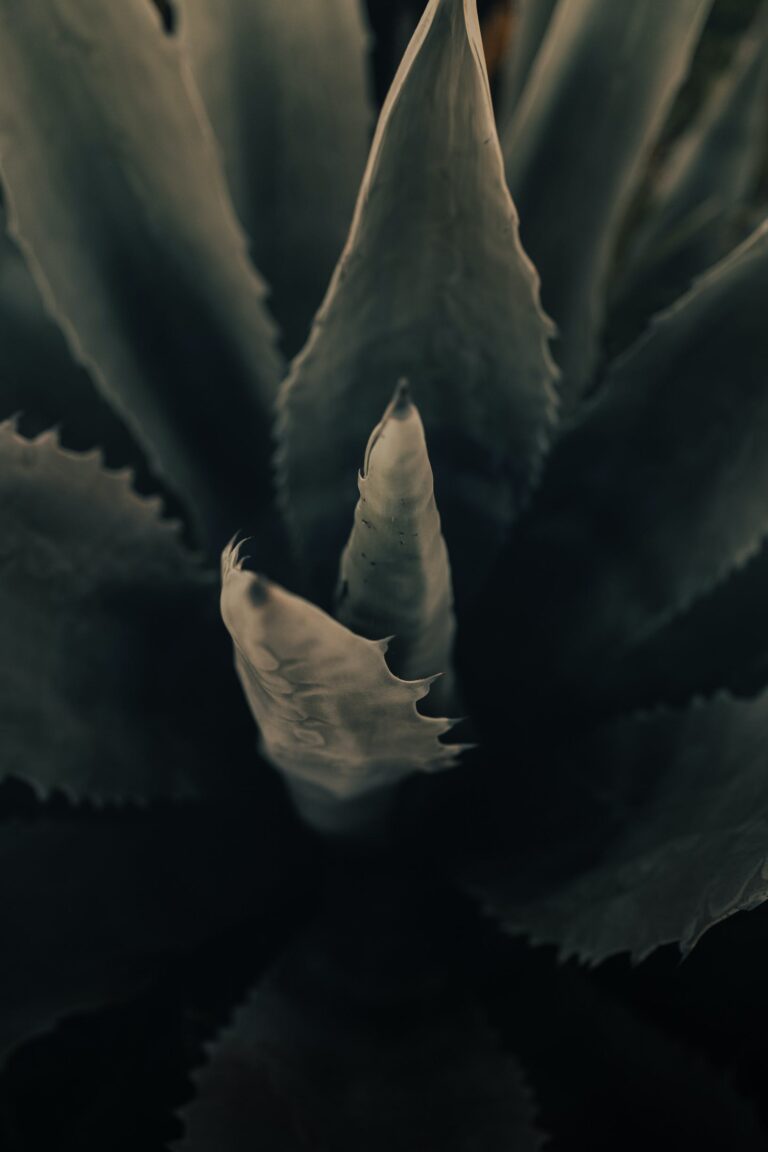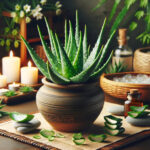Introducing Aloe Bakeri
Whisper the name Aloe bakeri in a gathering of succulent aficionados, and watch their eyes light up with a blend of reverence and curiosity. This rare jewel, often hidden in the overlooked nooks of arid landscapes or the collections of the most devoted plant lovers, boasts a mystique that’s as rich as its fleshy, verdant leaves. Originating from the rugged terrains of Madagascar, Aloe bakeri has traversed oceans and continents to grace the shelves of those in the know.
But what exactly catapults this unassuming plant into the limelight? It’s not just its scarcity that tantalizes collectors; it’s the plant’s unique architectural form – a rosette of pointed leaves crowned with subtle, yet striking, colorations. Unlike the aloes of front yard fame, this species doesn’t colonize space with overzealous sprawl. Instead, it asserts its presence with a composed elegance that tempts a closer look, a reaching out to touch the texture that promises both softness and prickle.
Intrigued by its exotic allure? You’re not alone. Those fortunate enough to care for an Aloe bakeri find themselves privy to a living art piece, its very existence a quiet rebellion against the mundane. For tips on how to nurture this precious species, explore the dedicated care guide on Succulent Alley. Remember though, as with all rare gems, the Aloe bakeri doesn’t merely abide by the will of its keeper. It flourishes under a watchful eye that respects its unique needs and celebrates its singular beauty.
Understanding the Aloe Family
Step into the world of succulents, and you’ll find the Aloe family reigning supreme with its unique and diverse members. The Aloe genus itself is a treasure trove of verdant gems, each with its own story to tell. With over 500 species under its belt, this group of plants paints a diverse landscape of shape, color, and resiliency. From the towering Aloe vera to the dainty Aloe bakeri, each species is an adaptation artist in the sprawling gallery of nature.
Imagine a kaleidoscopic spectrum of Aloes, each evolved to thrive in the searing heat of sun-drenched habitats or to hunker down in the shadows of arid landscapes. The Aloe genus doesn’t shy away from extremes; it embraces them as if each hardship were a brushstroke on its canvas. Picture the Aloe bakeri, a rare masterpiece, blending into this lush tapestry with its own distinct twist. Even in this family brimming with character, the Aloe bakeri emerges as a curious enigma—a rare collectible among the enthusiasts of succulent plants.
Spotting an Aloe isn’t just about recognizing its sword-like leaves or the stoic stance of its silhouette. It’s about understanding the survival stories etched in every curve of its waxy skin. These plants don’t just survive; they artistically sculpt their very existence to withstand the tests of time and nature. And somewhere in this symphony of survival, the diminutive yet striking Aloe bakeri plays its own, vital melody.
Dive into the intricate world of the Aloe genus, and you’ll discover more than just succulents. You’ll uncover a legacy that dates back centuries and spans across continents. It’s a narrative punctuated by resilience and the sheer will to adapt. The Aloe bakeri stands as a testament to this relentless spirit—a succulent sentinel in a world that’s constantly evolving.

Botanical Profile of Aloe Bakeri
Welcome to the enchanting world of Aloe bakeri, a rare succulent treasure that’s as mysterious as it is striking. Let’s take a stroll through its botanical nuances and uncover the secrets behind its lush, verdant charm.
First off, the structure of Aloe bakeri is a testament to its resilience. With stout stems anchoring a rosette of fleshy leaves, this succulent stands as a miniature fortress in its natural habitat. Each leaf, lined with subtle teeth, curves gracefully, storing water and vital nutrients that allow the plant to thrive in arid conditions.
When it comes to blooming, Aloe bakeri is not a shy flora. It produces a floral spike that’s as bold as it is beautiful, capped with tubular flowers that beckon pollinators from near and far. The blooming period is not just a visual spectacle but also a symphony of ecological interactions that’s absolutely fascinating to observe.
Photosynthetic Adaptations of Aloe Bakeri
But wait, there’s more! Beyond its aesthetics, Aloe bakeri boasts unique photosynthetic adaptations. This succulent utilizes a special type of photosynthesis called CAM (Crassulacean Acid Metabolism). Unbelievably, this allows our green friend to keep its stomata closed during the scorching day to minimize water loss, only opening them at night to breath in the cool air and exhale oxygen – a true nocturnal wizard of the plant kingdom!
It’s not every day that you come across a plant that’s not only a treat for the eyes but also a marvel of evolutionary ingenuity. Perhaps the next time you witness a succulent, consider the incredible botanical journey that has led to its existence. As for Aloe bakeri, it’s undoubtedly the little succulent that could, defying the harshness of its environment with effortless grace.
Still intrigued? Take a peek at this visual exploration to witness the splendor of Aloe bakeri in its full glory:
Cultivation Tips for Thriving Aloe Bakeri Plants
If you’ve been lucky enough to get your hands on an Aloe bakeri, congratulations! You’re the proud owner of a rare gem in the succulent world. To help your green buddy flourish, let’s dive into some cultivation secrets that’ll turn you into an Aloe whisperer in no time.
Soil Savvy for Stellar Growth
First things first, soil. Aloe bakeri plants yawn at the thought of standing water around their roots. They crave a well-draining mix that says ‘adios’ to excess moisture faster than you can say “overwatering is a no-no.” A cactus or succulent mix is your best bet. Or, get crafty and mix in some sand or perlite to conventional potting soil—it’ll thank you for the splendid drainage with luscious growth!
Water Wisdom: Less is More
When it comes to hydration, these Aloes are like desert nomads; they know how to survive on a sip rather than a gulp. Overwatering? That’s the highway to the danger zone for Aloe roots. The golden rule: water only when the soil feels drier than a stand-up comedian’s wit. And when you do, ensure it’s a thorough quench that reaches the depths of their roots.
Let There Be Light (But Not Too Much)
Aloe bakeri plants love their sunbathing sessions. But just like us, they need sunscreen—in the form of light shade—to prevent sunburn. A spot with bright, indirect sunlight will keep them basking without the risk of crispy leaves. East or west-facing windows are primo locations for these succulent superstars to catch some rays while avoiding the harshest midday sun.
Keepin’ it Temperate
These desert darlings dig a climate that’s on the milder side. Ideal temps range from 60 to 80 degrees Fahrenheit. Sure, they can handle a chill down to the 40s, but anything colder is the equivalent of sending them on an impromptu Arctic expedition. Home sweet home is where they won’t shiver in their pots!
Repotting Routines: Room to Grow
Is your Aloe bakeri feeling a bit cramped? Every couple of years, it’s repotting time! Scoop your plant into a new home just a tad roomier than the last. Taking this step ensures not only the space to grow but also fresh soil full of yummy nutrients. And hey, it’s an excellent opportunity to check the roots for any signs of distress. Healthy roots mean a happy plant!
Now, take a gander at this picture-perfect depiction of Aloe bakeri—isn’t it just a sight for sore eyes?

Propagation Techniques for Aloe Bakeri
Welcome garden enthusiasts to the exciting world of propagating the rare and precious Aloe bakeri! In this section, we’re getting our hands dirty and digging into the art of multiplying this succulent gem. So, let’s roll up our sleeves and jump into the propagation party!
First off, let’s talk about propagating Aloe bakeri through offsets. These little baby plants sprout at the base of the mother plant, eagerly awaiting their chance to shine. Once they’re of a decent size, simply separate them with a clean and sharp tool. Picture a tiny aloe ready to venture out into the world—just like sending your kid off to college, but with more soil and less tuition fees!
Starting with Offsets
If you’re eyeing those offsets, also known as pups, you’re looking at the easiest way to create a mini-me of your beloved Aloe bakeri. Wait until the pups have grown a few inches and developed their own roots. Gently detach them, ensuring each has its own root system intact, and pot them in a well-draining succulent mix. Think of them as little green ducklings following mama duck—keep them warm, avoid overwatering, and they’ll flourish!
Branching Out with Cuttings
Next, for the more adventurous souls, we dive into cuttings. To propagate by cuttings, you’ll want to select a healthy leaf, cut it with a clean snip, and let the wound heal and callous for a few days. Once calloused, stick the cutting into a succulent potting mixture. It’s a bit like that time you tried to grow a new houseplant from a single stolen snippet at your friend’s brunch—only legal and morally sound.
Going to Seed
Finally, for those with the patience of a saint, seeds are your game. Aloes, being the connoisseurs of patience they are, take their sweet time to grow from seed. Sow your Aloe bakeri seeds in a well-draining medium and give them warmth, light, and just a touch of moisture. Like watching a sitcom’s character development across seasons, you’ll get to enjoy their growth at a leisurely pace.
Each method has its charm, and you’ll find that, with a bit of perseverance and these top-notch tips, your Aloe bakeri collection will soon expand. Remember, good things come to those who propagate!
Pro Tip: Keep your propagated plants in indirect light and avoid watering them too much. Succulents love attention, but they’re also fans of “me time” and don’t appreciate soggy feet. Treat them like the royalty they are, and soon you’ll be the proud parent of a thriving Aloe bakeri family!
Common Challenges and Solutions
Aloe bakeri, a rare succulent gem, is cherished for its unique beauty and medicinal qualities. However, even the most seasoned green thumbs can encounter hiccups in cultivating these resilient plants. Let’s dive into the common challenges faced by Aloe bakeri growers and offer workable solutions that will help your green companion thrive.
Pesty Predicaments
If you notice your Aloe bakeri looking lackluster, it might be playing host to unwelcome guests like aphids or mealybugs. These pests are notorious for sapping vitality from plants. Imagine spotting a mealybug infestation, only to remember that a friend had recently lamented over the same issue. You recall their success using neem oil—a natural, effective remedy. Apply it to your Aloe bakeri, and those pesty problems could soon be history.
Disease Dilemmas
Fungal infections like root rot can turn your succulent’s sanctuary into a nightmare. Overwatering is often the root cause—pun intended. A well-meaning enthusiast once recounted overwatering their Aloe bakeri, leaving it vulnerable to disease. The solution? Letting the soil dry out completely between watering sessions and ensuring the pot has adequate drainage can be a turning point toward recovery and prevention.
The Perils of Overwatering
Oftentimes, our nurturing instincts kick in a tad too strongly, leading to an overly moist environment which Aloe bakeri simply detests. Keep in mind a simple mantra: “When in doubt, don’t pour it out.” Monitoring the soil’s moisture level before reaching for the watering can is a small yet crucial step towards maintaining the plant’s optimum health.
Shedding Light on Under-lighting
Just like too much water, too little light can leave Aloe bakeri reaching for the sun, quite literally. Stretching towards light sources, these succulents can become etiolated, losing their compact, lush form. A novice grower shared their success story of simply relocating their Aloe bakeri to a sunnier locale, transforming a once spindly plant back into its robust self.
Now, for a visual treat and to see these solutions in action, dive into this informative video on caring for your Aloe bakeri:
Aloe Bakeri’s Place in Home Decor
The subtle charm of Aloe bakeri, a rare and beautiful succulent, is quietly making its way into the hearts and homes of decor enthusiasts. With its easy-care disposition and stunning appearance, this succulent can elevate the aesthetic of any living space. Let’s dive into how Aloe bakeri can become a jewel in the crown of your home decor.
Imagine stepping into a room where the vibrant green of Aloe bakeri gives a refreshing contrast to the warm tones of a rustic-themed space. Picture this succulent in a terra cotta pot, perched on an open shelf, complementing the earthen hues around it, and bringing a pop of nature indoors. This hardy plant finds its footing effortlessly, whether it’s accentuating a minimalist setting or adding a dash of elegance to a Bohemian-styled nook.

Incorporating Aloe bakeri into a contemporary living area is as simple as choosing the right container. A geometric planter can echo the modern lines in space, creating a unified look that speaks volumes of your attention to detail. As this succulent thrives with little fuss, it’s perfect for busy homeowners who desire a touch of greenery without the commitment of high-maintenance care.
But the magic of Aloe bakeri doesn’t stop at beautifying your space. Known for purifying the air, these ornamental powerhouses do more than please the eye. They enhance your living environment, contributing to a healthier and more serene atmosphere. With Aloe bakeri, you’re not just choosing decor; you’re selecting a silent guardian that looks after your well-being while resonating with versatility and style.
Real-life examples abound where Aloe bakeri has transformed a mundane space into a refreshing sanctuary. From being the centerpiece on a coffee table surrounded by books and candles to sitting pretty on a windowsill, basking in the morning light – the potential is unlimited. This succulent adapts and thrives, bringing with it an undeniable charm that enhances every corner it graces.
Whether you’re looking to inject a breath of fresh air into your urban apartment or wanting to enhance the natural vibe of your country-style home, Aloe bakeri stands ready to be your green companion. Its presence whispers tales of exotic lands and effortless maintenance, making it the perfect addition to a well-thought-out space.
Conservation Status and Ethical Sourcing
Peeling back the layers of Aloe bakeri’s story, we reveal a narrative tinged with vulnerability and a plea for responsibility. This rare succulent gem, tucked away in exotic locales, speaks to the heart of conservationists and plant enthusiasts alike. Its scarcity in the wild forms an intriguing backdrop that’s ripe for exploration.

A delicate dance with extinction – that’s the dance that Aloe bakeri does. Classified as ‘at risk’ due to its limited geographical distribution, it’s a species that prompts us to reflect on the fragility of nature’s treasures. With each plant holding its own unique genetic code, the loss of even a single specimen is a chapter closed forever in the evolutionary tale.
Importance of Ethical Plant Sourcing
To ensure future generations can marvel at the same diverse tapestry of flora we do today, ethical sourcing is non-negotiable. When demand for exotic plants like Aloe bakeri skyrockets, the risk of unsavory harvesting practices increases. Unethical collection not only pillages natural habitats but often violates local and international conservation laws.
Picture a world where each Aloe bakeri adorning our spaces is a testament to conscientious stewardship. How, you ask? By supporting nurseries that prioritize sustainability, investing in communities that protect their native flora, and turning away from questionable sources. This proactive choice to be part of the solution keeps the delicate balance of ecosystems intact.
Guidelines for Conscientious Acquisition
So, you’ve set your heart on adding an Aloe bakeri to your collection. Pause and ponder the provenance. Always inquire about the origin of the plants and ensure they are propagated—never plucked—from their natural settings. Verify certifications and seek out reputable dealers that collaborate with conservation programs. It’s a powerful way to propagate preservation.
In essence, our affinity for plants must be matched with an equally strong commitment to their preservation. It’s a narrative that transforms us from mere enthusiasts to guardians of green heritages. As aficionados of Aloe bakeri, let’s pledge to be ethical, eco-conscious, and engaged – preserve its line, conserve its kind.
Leveraging Aloe Bakeri for Health and Wellness
The allure of Aloe bakeri, with its lush, green rosettes, extends beyond its visual charm. This scarce succulent is whispered to hold secrets to health and well-being. But just like exploring a hidden cave for treasure, uncovering its medicinal uses invites both excitement and a need for caution.
Imagine, if you will, a tranquil garden. In it, amidst other greenery, grows the rare Aloe bakeri. Known in some circles for its traditional medicinal roles, this plant’s exact benefits can be as elusive as its presence in the wild. While the more famous Aloe vera reigns supreme in the wellness world, the Aloe bakeri’s potential is an untold story ripe for exploration.

In small communities that are custodians of ancient knowledge, you might hear of Aloe bakeri being used in similar fashions as its famous cousins, perhaps involved in soothing minor skin irritations or as part of a calming herbal concoction. Yet, in the absence of widespread recognition and research, one must tread lightly with such claims.
Now, picture a local market in a village where traditional remedies are still the cornerstone of daily health practices. A knowledgeable elder, versed in the lore of plants, might cautiously select a leaf from an Aloe bakeri for its supposed benefits. But this image serves as a reminder: what works in tradition requires the validation of science to ensure safety and efficacy.
For the adventurous spirit intrigued by herbal applications, Aloe bakeri might represent an exciting frontier. However, any experimentation should be backed by solid research. Like all medicinal plants, Aloe bakeri calls for a respectful approach—balancing curiosity with an obligation to understand its properties fully before integrating it into any wellness routine.
Frequently Asked Questions
Stepping into the enchanting world of Aloe bakeri, many enthusiasts find themselves brimming with curiosity. This section is a treasure trove of tips and advice dedicated to the green-thumbed treasure hunters seeking to unlock the full potential of their rare succulent gem.
What Are the Key Care Tips for Aloe Bakeri?
Maintaining the exotic charm of Aloe bakeri is a delicate dance of sunlight, watering rituals, and the perfect soil mix. Imagine a sun-drenched shelf, where this resplendent succulent basks in bright, indirect light. Hydration is an art form—allow the soil to dry out between waterings, as overzealous watering can lead to the tragic wilting of the aloe’s roots.
How Do I Identify Aloe Bakeri?
True to its lineage, the Aloe bakeri flaunts a rosette formation, with leaves that are a tapestry of green with tinges of pink under the sun’s gentle caress. Its leaves, armed with white teeth, are the sentinels guarding the plant’s vitality. When in bloom, expect a spectacle of orange-red flowers that stand as a beacon to hummingbirds.
Maximizing Blooming Potential
Achieving the floral fanfare of Aloe bakeri is akin to nurturing an athlete for a performance. A strategic regimen of succulent fertilizer during the growing season propels this aloe to showcase its inflorescence. Adequate sunlight fuels its blooming vigour, reminding caretakers of the interplay between light and life.
Solving Common Health Issues
Even the most seasoned gardeners face trials with Aloe bakeri. Yellowing leaves often highlight the silent screams for help against overwatering. Meanwhile, feeble, pale growth signals a desperate plea for more sunshine. Timely intervention, paired with an understanding of the aloe’s language, enables one to restore their succulent to its former glory.

Remember, each Aloe bakeri is a living narrative. It reacts to its caretaker’s methods, the environment it calls home, and the challenges it faces in its growth. By engaging with the plant’s needs and recognizing its signs, you cultivate not only a thriving aloe but also a flourishing chapter in your gardening journey.



